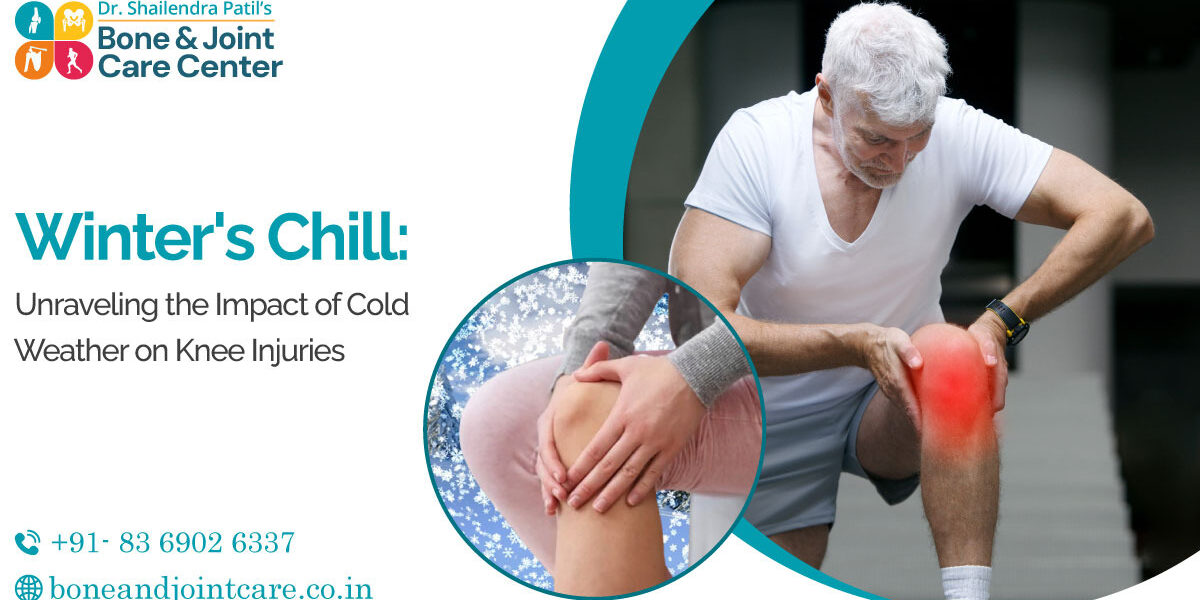As the winter season blankets the world in a serene layer of frost, it brings not just the magic of snowflakes but, for some, the unwelcome companion of increased knee pain. Here, you can delve into the nuanced relationship between cold weather and Knee Surgery in Mumbai. You can also learn about the various factors that conspire to intensify discomfort during winter.
For those grappling with knee injuries, the Bone and Joint Care Center addresses a common observation: a fluctuation in knee pain with changing weather, particularly during winter. This phenomenon prompts a closer look at the factors contributing to knee pain exacerbating in colder temperatures.
Barometric pressure, the weight of the air enveloping us, plays a pivotal role in this seasonal dance of discomfort. As the mercury drops, barometric pressures often follow suit, causing gases and fluids within the knee joint to expand. This expansion puts undue pressure on nerves, resulting in heightened pain sensations.
Adding another layer to this complex dynamic, you must learn the adverse effects of cold and high humidity on the cellular structures of cartilage and bone. This environmental interaction can be particularly harmful, potentially accelerating the degenerative processes within the knee joint and contributing to increased pain and discomfort. Individuals are encouraged to take proactive measures such as keeping warm through activities like warm showers or baths and dressing in layers when facing the winter elements to counteract winter.
The hypersensitivity of nerves within the knee joint emerges as another significant factor. In cases of knee injury, whether stemming from inflammation, scarring, or adhesions, the nerves within the joint can become overly sensitive to cold weather. It heightened sensitivity amplifies pain perception, underscoring the importance of addressing inflammation and promoting overall joint health to mitigate the impact of colder temperatures.
Certain types of knee injuries are particularly susceptible to worsening in cold weather. Runner’s knee, a condition resulting from the pressure exerted on the knee joint during running, may experience heightened discomfort during colder temperatures due to a slower heart rate response and stiffer surrounding muscles. Trauma to the knee and patellar tendonitis, commonly known as jumper’s knee, are also highlighted as conditions that can be aggravated by the cold, emphasizing the need for tailored care during winter.
Discover winter’s impact on knees Also Check ‘Avoiding Common Running Injuries’ for essential tips!
Keeping warm through various means, preventing swelling with knee compression bands, and maintaining a healthy weight while staying physically active are advocated as essential measures for relief.
Individuals experiencing knee pain are encouraged to seek guidance from experts, such as a Knee Surgeon in Mumbai, who can provide specialized care tailored to their unique needs. By understanding the intricate relationship between cold weather and knee injuries and adopting preventive measures, individuals can navigate the winter season with greater comfort, resilience, and mobility.
Explore fractures’ world 🦴 Learn treatments!
In conclusion, the Bone and Joint Care Center‘s insights offer a comprehensive guide to deciphering and mitigating the impact of cold weather on knee injuries. With knowledge and proactive strategies, individuals can reclaim control over their musculoskeletal health, ensuring a more comfortable and pain-free winter experience.







